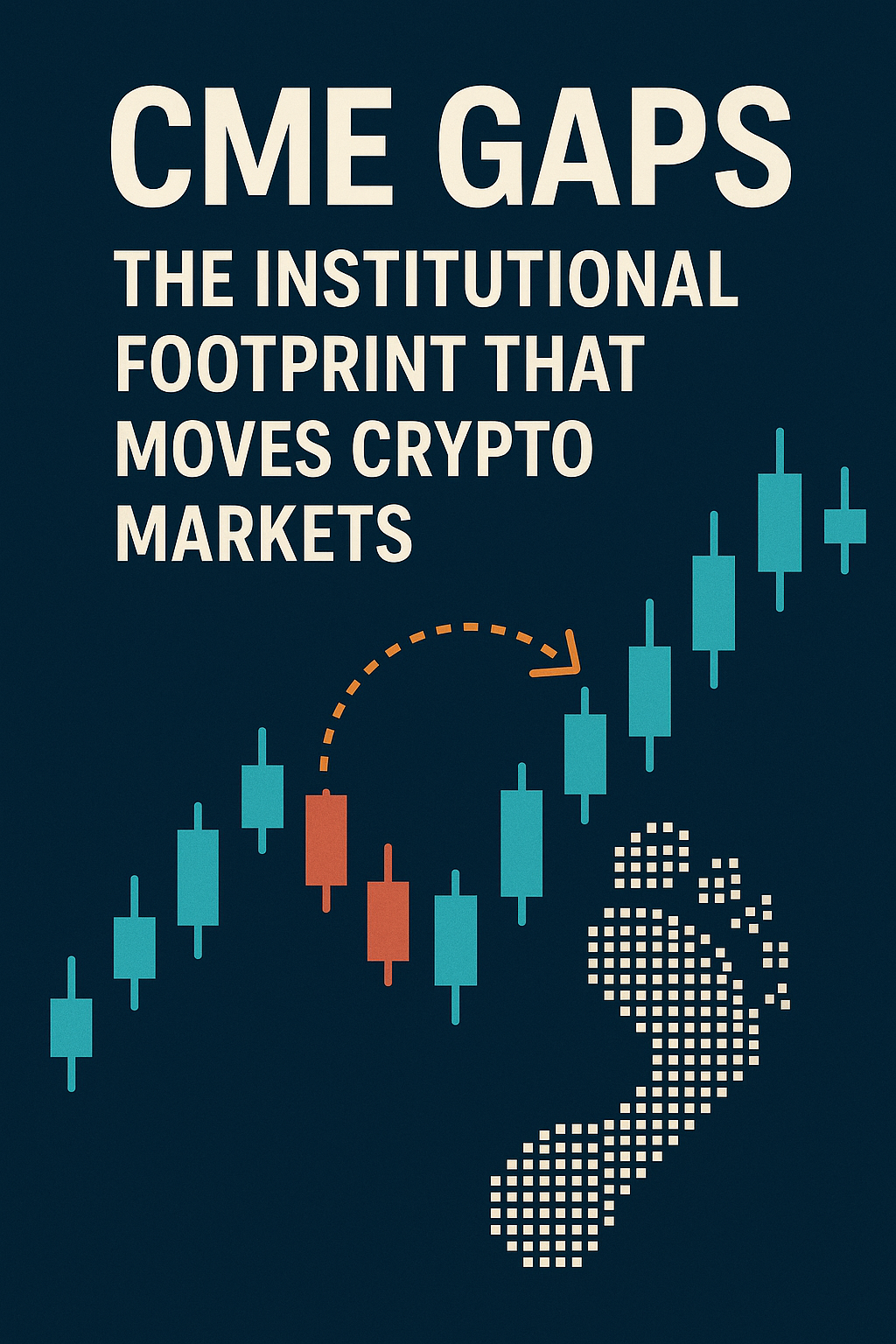CME Gaps: The Institutional Footprint That Moves Crypto Markets

The crypto market may run 24/7,1 but there’s one gap that still leaves a lasting impact each week: the CME gap.
These gaps, which originate from the Chicago Mercantile Exchange (CME) Bitcoin Futures market, are often used by traders to predict short-term price movements in Bitcoin. But few understand the psychology, mechanics, and game theory that make them powerful.
In this article, we’ll break down what CME gaps are, why they matter in crypto, and how smart traders and protocols like Mitosiscan use this institutional pattern to their advantage.
What is a CME Gap?
The CME (Chicago Mercantile Exchange) is a traditional finance institution that offers regulated Bitcoin futures. Unlike crypto exchanges, the CME operates on a weekday schedule, closing on Fridays at 5 PM EST and reopening on Sundays at 6 PM EST.
When the crypto market trades over the weekend, any large move in Bitcoin’s price creates a “gap” on the CME chart — a price level with no trading data between the Friday close and Sunday open.
Example: If BTC closes at $63,000 on Friday and opens at $64,500 on Sunday, there’s a $1,500 CME gap.
These gaps often get “filled” meaning the price comes back to trade within that range, but the timing and context of those fills reveal deeper psychology.
Why CME Gaps Matter in Crypto
Even though the CME is a TradFi platform, its influence on Bitcoin’s price action is undeniable, especially for these reasons:
1. Institutional Liquidity Leaves a Trail
The CME is where major institutions hedge or speculate on Bitcoin. Gaps act like a footprint of institutional positioning, and price often returns to those levels as part of the price discovery process.
2. Algorithmic Trading Targets Gaps
Quant funds and market makers frequently write scripts to hunt liquidity around gaps, creating a self-fulfilling prophecy where price revisits these levels not by magic, but by mechanics.
3. Retail Eyes CME for Signals
Smart retail traders know that CME gaps are respected. In a world driven by technical analysis and sentiment, collective belief can drive actual outcomes.
Types of CME Gaps
There are two key kinds:
🔼 Upward CME Gap
Occurs when Bitcoin opens higher on Sunday than where it closed Friday.
- Often gets filled by a temporary pullback.
- Can signal bullish momentum, but also an upcoming retracement.
🔽 Downward CME Gap
Occurs when Bitcoin opens lower on Sunday than Friday’s close.
- Price may bounce to retest the gap.
- Sometimes fills quickly if momentum is weak.
Game Theory Behind Gaps
Think of CME gaps like unfinished business.
If institutions are long and a downward gap forms, price might be pulled back up to fill the gap, offering them a better exit or entry.
If retail traders front-run a gap fill, market makers might push price in the opposite direction first — shaking them out before the actual fill.
This dance plays out week after week, and savvy traders use it as part of a broader strategy — especially in volatile altcoin seasons where Mitosis liquidity comes into play.
How Mitosis Enhances Trading During CME Gap Volatility
Protocols like Mitosis allow you to optimize liquidity across chains, letting traders:
- Bridge quickly to opportunities on L2s or altchain ecosystems.
- Rebalance exposure when BTC is expected to fill a CME gap.
- Protect yield-generating positions during high-volatility CME gap movements.
CME gaps are no longer just a BTC or ETH game, their impact ripples across DeFi yield, cross-chain liquidity, and real yield opportunities powered by Mitosis’s universal liquidity layer.
Quick Tips for Trading CME Gaps
✅ Identify unfilled gaps on the CME BTC Futures chart (1H/4H/Daily)
✅ Watch Sunday night and Monday morning for high volatility
✅ Use stop-losses — gaps don’t always fill instantly
✅ Consider correlations: ETH, altcoins, and L2s often react to BTC gap fills
✅ Watch funding rates and open interest before acting — they hint at trap setups
Final Thoughts
CME gaps are not just chart patterns — they’re windows into institutional behavior, trader psychology, and market inefficiencies.
When combined with cross-chain liquidity tools like Mitosis, traders gain an edge in volatile environments, optimizing entries, exits, and passive income across ecosystems.
Whether you're a technical trader or a DeFi strategist, understanding CME gaps is essential for navigating the modern crypto market.
🔗 Internal Mitosis Links to Explore:
- Altseason Volatility Meets Smart Liquidity
- The Liquidity Layer Revolution
- Real Yield vs Inflationary Rewards
- How Mitosis Unifies Liquidity Across Chains
- Smart Money Concepts in Crypto
References
- Chicago Mercantile Exchange: CME Bitcoin Futures
- Investopedia: Understanding Gaps in Trading
- TradingView: BTC1! CME Chart
- Mitosis University: Articles on Market Psychology



Comments ()